The direction of U.S. foreign economic policy—and with it the ability of the United States to renew its leadership in Asia—will be shaped by the outcome of the 2024 presidential election. The region is laser-focused on whether the United States can find a way to both offer meaningful economic engagement and compete responsibly with China. The next administration’s choices will have profound consequences for the U.S. position in this critical region.
A reenergized American economic statecraft elevates “economics” to not just an instrument of foreign policy (sanctions), but an important end in and of itself given that leading in the technological race promises both domestic economic renewal and augmented international influence. It is guided by an ambitious set of objectives such as nurturing advanced manufacturing ecosystems that can catalyze investment, job creation, and tech spillover, while ameliorating supply chain vulnerabilities, slowing down Chinese military modernization, and curbing Beijing’s economic coercion. The economic security toolbox is morphing at a fast clip. New export control rules to cover emerging technologies, tighter security screening for inbound and outbound investment, industrial subsidies to advance semiconductor manufacturing and the green transition, and steps to roll out early warning systems in core supply chains are all dizzying lines of effort.
But this lofty vision of decisive statecraft is served with a large dollop of economic nationalism. Buy America requirements in government procurement contracts have increased, and tariff barriers have proliferated—not just against China but also targeting our allies using a “national security” justification. The spirit of friendshoring runs thin when Presidents Joe Biden and Donald Trump coincide in opposing Nippon Steel’s acquisition of U.S. Steel—even before negotiations with the union run their course and the Committee on Foreign Investment in the United States’ review process is completed.
The duality of American economic statecraft—animated both by securitization and politicization—will meaningfully impact Asia’s future. Important elements of the regional order are already under stress: the U.S. role as the unchallenged security anchor and champion of an open multilateral trading system, a “Factory Asia” tightly integrated through “just-in-time” supply chains, and the economic magnet of a rapidly growing China. Xi Jinping has continued to build a national security state prioritizing political control over economic performance and has made technological preeminence a key objective for the expansion of Chinese national power.
As the United States and China spar to control chokepoints in advanced supply chains, states and private companies across Asia worry that growing fragmentation could throw sand in the regional engines of growth.
The alternatives
In polarized Washington, there is a budding coalescence around some key fundamentals: deep skepticism of China, an embrace of industrial policy, and full-blown buyer’s remorse on past trade liberalization. There are some striking continuities in the Trump and Biden administrations. Biden not only largely retained the Section 301 tariffs Trump had imposed in 2018 on $360 billion of Chinese imports; he increased duties on $18 billion of trade with China by quadrupling the tariff on electric vehicles to 100% and increasing duties to 50% on both semiconductors and solar panels.
Trump’s export control reforms—covering emerging technologies, placing Huawei in the Entity List, and vastly expanding the extraterritorial reach of U.S. tech controls—are significant precursors to the current administration’s approach to technology flow restrictions. The Biden administration has offered a clearer articulation of the rationale for stricter controls (China utilizes civil-military fusion practices to divert commercial technologies for advanced weapons development) and adopted sweeping rules on October 7, 2022, (updated a year later) to prevent China’s access to the most sophisticated chips, the equipment to indigenize their production, and to American talent. In these ways, Biden has systematized export control policies that had begun to shift during the Trump administration.
But the Biden team broke new ground in coordinating with partners on tech controls: the plurilateral technology sanctions on Russia after its 2022 invasion of Ukraine, and the agreement with The Netherlands and Japan on semiconductor production equipment. The will and ability to work with allies are key differences that underscore that a “new Washington consensus,” one that strikes a new balance between domestic industrial strategy and international economic leadership, is more a mirage than reality. Even with shared premises regarding China as the United States’ pacing challenge and the centrality of high-tech products to great power competition, there will be marked differences in Asia policy and economic statecraft depending on the U.S. electoral outcome in November. A comparison of the Democratic and Republican tickets makes this clear.
A fair amount of continuity is to be expected with Vice President Kamala Harris, including a worker-centered trade policy, a proactive climate agenda, sustained technology competition with China, and a strong emphasis on the minilaterals the United States is knitting across the region. A Harris victory would mean the Indo-Pacific Economic Framework (IPEF) lives to see another day. Heralded as a new form of economic engagement with 13 other economies, IPEF sidesteps tariff elimination and develops economic cooperation mechanisms on supply chain resilience, the environment and the clean economy, and corruption and tax policy. The pillar on labor and digital standards remains unfinished.
Harris does not have an extensive track record on trade policy, but her past opposition to the Trans-Pacific Partnership (TPP) and her vote in the Senate against the U.S.-Mexico-Canada free trade agreement for not doing enough to protect the environment are well known. Some observers anticipate that Harris may elevate trade tools to advance her climate agenda and pursue a more active policy on digital trade. The region will take cues from how she tackles IPEF. Developing economies are reluctant to agree to America’s strict labor standards in the absence of market access benefits. Trouble is afoot as well on the digital component. The United States abruptly suspended digital economy negotiations and has no clear position on how to reconcile freedom of data flows with privacy protections. A future Harris administration would also do well not to ignore the demand signal coming from the region. In contrast to the huge shock produced by the U.S. exit from TPP, there is little handwringing about IPEF’s uncertain prospects because the region sees only modest value in it. Hence, IPEF should be the springboard for a more ambitious play in U.S. economic leadership if Harris can seize this opportunity.
A different path lies ahead if Trump returns to the White House. He continues to relish tariffs as an instrument of national power and sees his first term in office as proof of their effectiveness. This notwithstanding some stubborn facts: the trade war with China did not reduce the overall trade deficit as Chinese indirect exports likely increased; the U.S.-China Phase 1 trade agreement was soon dead letter as Beijing did not fulfill any of its pledges to buy more American products; and the costs from hiked tariffs were passed on to American consumers.
For his second term, Trump wants to go bigger on tariffs as leverage to secure all his deals and to correct trade imbalances. He has advocated for:
- A universal 10% tariff on all imports into the United States.
- The adoption of a Trump Reciprocal Trade Act that would allow him to raise U.S. tariffs at his discretion to match higher duties applied by other countries (undoing basic commitments under the World Trade Organization).
- Stripping China’s most favored nation status plus the imposition of a 60% tariff on all products exported by China to the United States.
- A 200% duty on Chinese electric vehicles (EVs) manufactured in Mexico and shipped to the United States (currently, there are no Chinese EV assembly plants in Mexico exporting to the United States).
Trump also has suggested supplanting income taxes with tariffs, but the Council of Economic Advisors has run the numbers to show this would require an across-the-board tariff of at least 70%, with large, negative effects on productivity, growth, and income inequality. Another consequential idea percolating in Trump world is to depreciate the dollar to address the U.S. global trade imbalance. Tariffs again would be the instrument of choice to force others to realign their currencies.
The uptick in beggar-thy-neighbor policies could beget more protectionism elsewhere. It will erode coordination with allies and partners on technology competition with China as disputes over trade deficits, punitive tariffs, managed trade, and competitive devaluations sap the spirit of cooperation.
The way forward
Strong U.S. leadership in Asia requires a more robust economic agenda, which remains its weakest leg. Keeping in mind that the supply of U.S. leadership must meet the regional demand for it, the four C’s—commerce, consistency, calibration, and coalitions—below should guide the next chapter of U.S. economic statecraft:
Commerce. Trade skepticism separates the United States from the region. Brisk trade diplomacy characterizes Asia today with the emergence of mega trade agreements (the Comprehensive and Progressive Trans-Pacific Partnership; the Regional Comprehensive Economic Partnership) and sectoral agreements in areas like digital trade. The United States is not a player here anymore, missing out on opening new markets for its exporters, crafting binding rules to govern cross-border economic exchange, and leaving a wide berth to China to augment its influence through trade diplomacy. The record of the last eight years shows that giving up on trade liberalization has not healed the divisiveness around globalization. The attempt to politicize the adoption of electric vehicles by playing on fears of job losses from the green transition attests to that. The IPEF experience should dispel the notion that the United States can disseminate enforceable labor and environmental standards without offering market opening. To lead, the United States should learn from its partners in Asia on how they have reconciled privacy protections with proactive digital economy diplomacy, how they are doubling down on free trade agreements and open-economy industrial policies, and the ways in which trade commitments can support resilience and diversification.
Consistency. The politicization of the trade agenda has dimmed U.S. leadership. As president, Trump delivered a blow to the region’s hopes for sustained American engagement when he withdrew the United States from TPP. He has promised a similar fate for IPEF if reelected. In the fall of 2023, Biden sent shockwaves with the abrupt withdrawal of U.S. support for the principle of free data flows in the World Trade Organization’s e-commerce talks, together with the suspension of IPEF’s talks on digital standards. Leadership requires followership, but it will be harder to entice others to join U.S. initiatives if negotiations come to be regarded as low-probability endeavors due to domestic contestation.
Calibration. In Asia, the U.S. debate on the desired end goal of economic statecraft vis-à-vis China—decoupling or de-risking—appears far from settled. This is not surprising given Trump’s penchant for zero-sum competition and the full-throated calls for economic separation made by influential voices in Republican foreign policy circles. But regional stakeholders’ concerns are not circumscribed to just one side of the aisle. There is keen interest in whether the Biden administration’s promise of keeping export controls narrowly focused (the so-called “small yard, high fence” approach) is feasible. Doubts persist because the United States is targeting force-multiplier technologies such as artificial intelligence and microelectronics that have wide effects across civilian and military sectors. While U.S. allies like Japan and South Korea share concerns about protecting sensitive technologies and have endeavored to comply with U.S. long-arm restrictions, they have stopped short of openly endorsing the much-expanded U.S. objective of delaying Chinese technological development. Sensitivity to potential Chinese retaliation is a factor, but it goes beyond that. It is about a nagging worry that a restrained approach to technology curbs may fall by the wayside as the United States attempts to close loopholes or restricts more mature technologies (e.g., legacy chips).
China’s marginalization has never been in the Asian playbook of how to win economically—even among those states with deep apprehension about Beijing’s power. They are keen to reduce overdependence, protect sensitive technologies, and deter Chinese economic coercion—but they also seek to sustain profitable trade and investment ties and stabilize political relations. A measured U.S. strategy that tackles key vulnerabilities but does not roil the brunt of trade flows will entice broader regional support.
Coalitions, narrow and wide. To step up its game in Asia, the United States will have to rebalance its economic diplomacy with a broad and sustained campaign of economic engagement that does not rule out trade liberalization. It will also require nurturing the budding economic security partnerships (such as the U.S.-Japan-South Korea trilateral) into more fully fleshed coalitions that can develop a plurilateral approach in both areas of technology promotion and protection. American economic heft and diplomatic acumen would constitute a powerful combination in both endeavors.
The Brookings Institution is committed to quality, independence, and impact.
We are supported by a diverse array of funders. In line with our values and policies, each Brookings publication represents the sole views of its author(s).
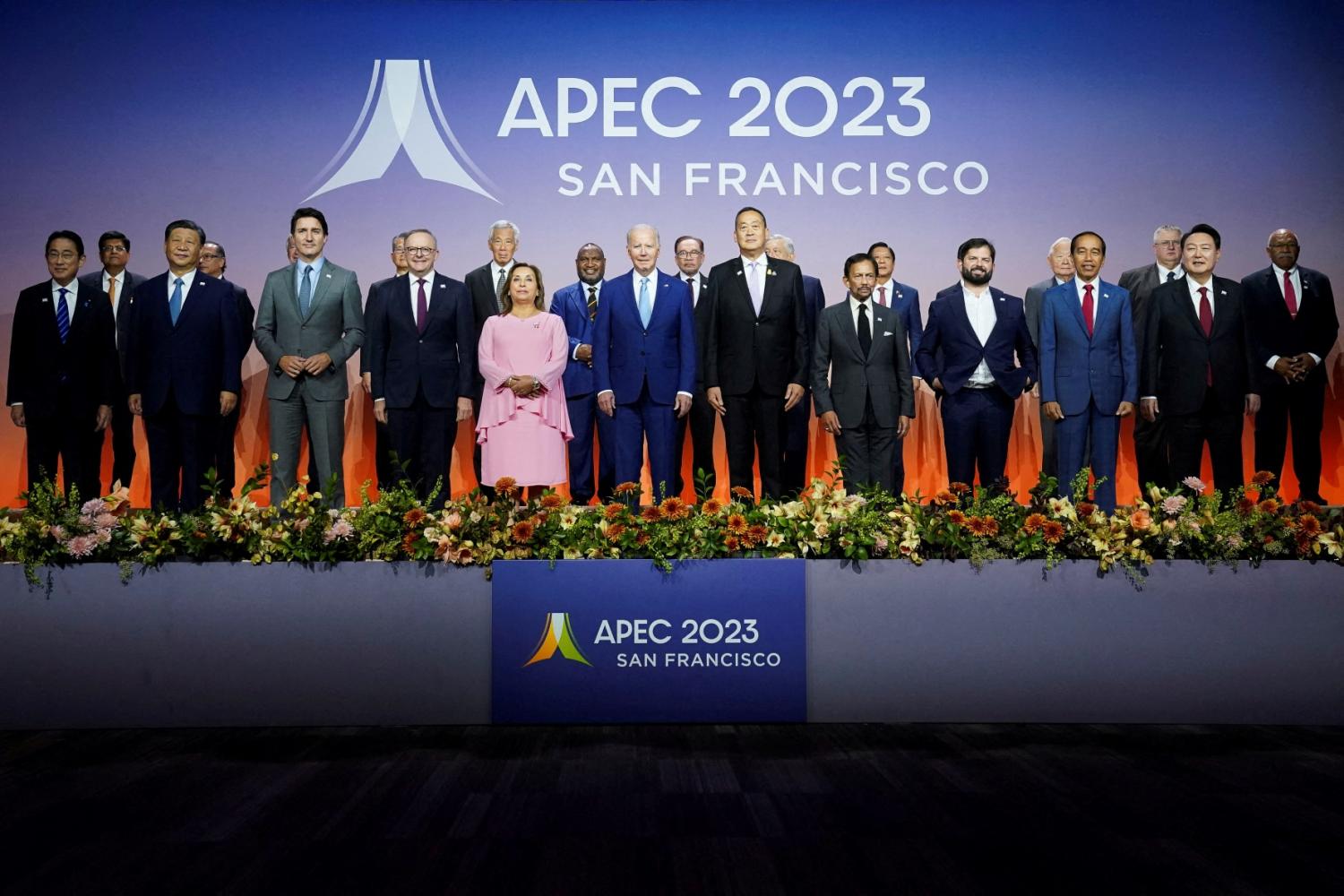

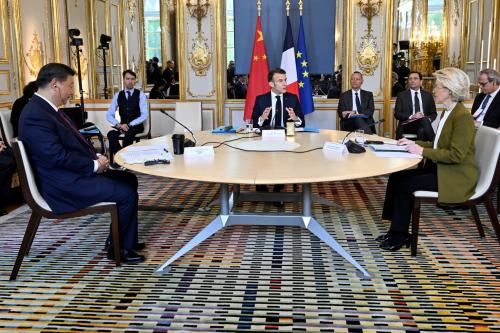
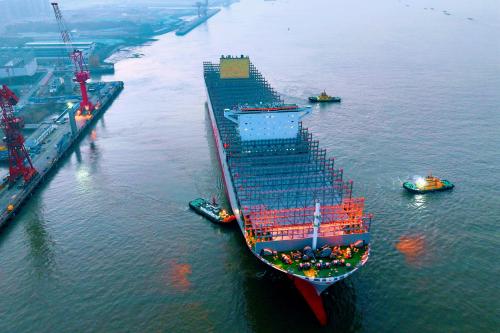
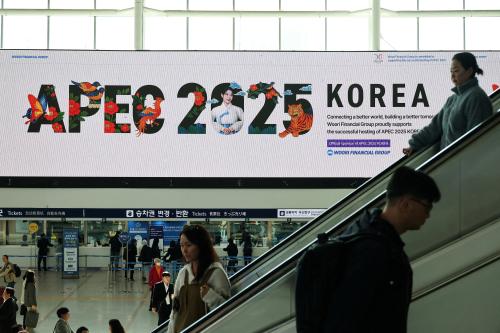
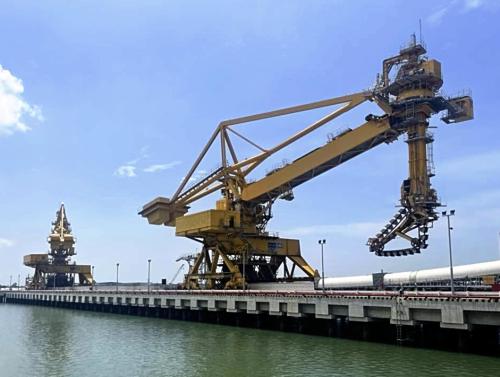
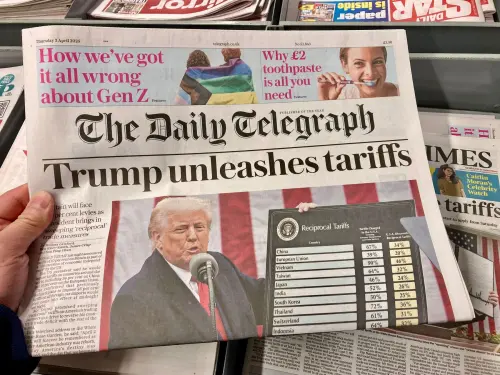
Commentary
Winning the economic game in Asia
September 16, 2024